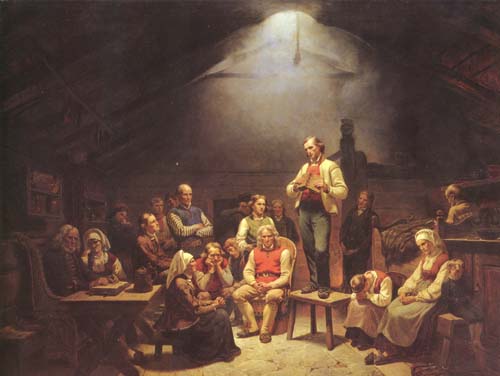Adolph Tidemand (1814-1876)
Get a Adolph Tidemand (1814-1876) Certificate of Authenticity for your painting (COA) for your Adolph Tidemand (1814-1876) drawing.
For all your Adolph Tidemand (1814-1876) artworks you need a Certificate of Authenticity (COA) in order to sell, to insure or to donate for a tax deduction.
Getting a Adolph Tidemand (1814-1876) Certificate of Authenticity (COA) is easy. Just send us photos and dimensions and tell us what you know about the origin or history of your Adolph Tidemand (1814-1876) painting or drawing.
If you want to sell your Adolph Tidemand (1814-1876) painting or drawing use our selling services. We offer Adolph Tidemand (1814-1876) selling help, selling advice, private treaty sales and full brokerage.
We have been authenticating Adolph Tidemand (1814-1876) and issuing certificates of authenticity since 2002. We are recognized Adolph Tidemand (1814-1876) experts and Adolph Tidemand (1814-1876) certified appraisers. We issue COAs and appraisals for all Adolph Tidemand (1814-1876) artworks.
Our Adolph Tidemand (1814-1876) paintings and drawings authentications are accepted and respected worldwide.
Each COA is backed by in-depth research and analysis authentication reports.
The Adolph Tidemand (1814-1876) certificates of authenticity we issue are based on solid, reliable and fully referenced art investigations, authentication research, analytical work and forensic studies.
We are available to examine your Adolph Tidemand (1814-1876) painting or drawing anywhere in the world.
You will generally receive your certificates of authenticity and authentication report within two weeks. Some complicated cases with difficult to research Adolph Tidemand (1814-1876) paintings or drawings take longer.
Our clients include Adolph Tidemand (1814-1876) collectors, investors, tax authorities, insurance adjusters, appraisers, valuers, auctioneers, Federal agencies and many law firms.
We perform Adolph Tidemand art authentication, appraisal, certificates of authenticity (COA), analysis, research, scientific tests, full art authentications. We will help you sell your Adolph Tidemand or we will sell it for you.
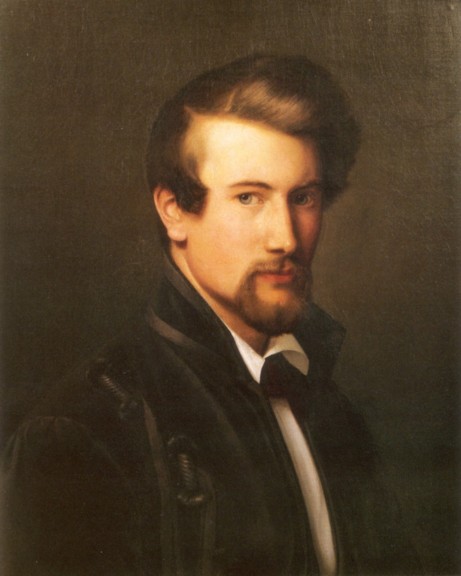
Adolph Tidemand was a Norwegian painter who was born in Mandal in 1814. At this time there were no art schools in Norway, so he moved to Copenhagen, Denmark at the age of 18 to attend the art academy. He studied there for five years and then began a journey to Italy to study further. But when Tidemand came to Düsseldorf, Germany, he liked it so much that he settled down there. Tidemand was preoccupied by Norwegian history, particularly after returning on a journey to Norway in 1843. After that he often traveled to Norway.
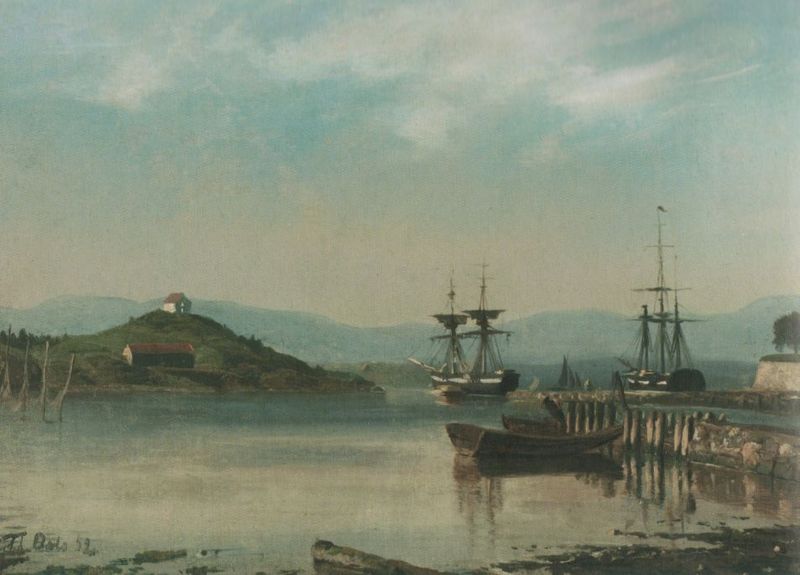
Tidemand was an important Norwegian romantic nationalism period painter with many paintings. Tidemand’s paintings of the old Norwegian farm culture show the Norwegian farmers as they were. Today Adolph Tidemand is counted as the first to the Norwegian historic painters and is best known for this depiction of Norwegian farm and street life. The Nasjonalgalleriet (the national gallery) in Oslo alone owns over 100 of his works. His best known pairing is “Haugianerne” (the Haugians) painted in 1852, and “Brudeferd i Hardanger” (The bridal procession in Hardanger) painted in 1848 with Hans Gude.
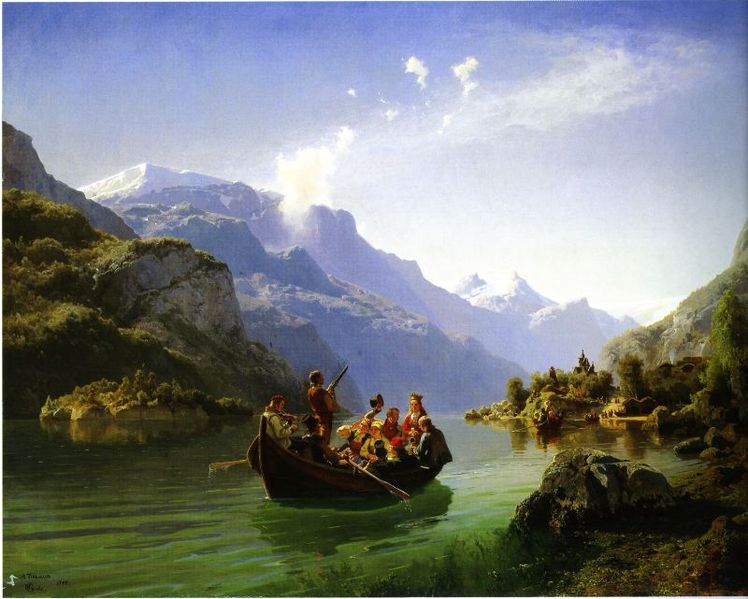
Adolph Tidemand was born in Mandal, Norway as the son of customs inspector and storting representative Christen Tidemand and Johanne Henriette Haste. He received private art lessons in his home town and his talent was soon recognized. He then was enrolled in an art school in Christiania, moving on to Copenhagen in the period 1832-37. Upon arrival in Copenhagen, he was rejected by the Royal Danish Art Academy and studied at a private school of art, but by 1833 he was a pupil at the Academy, earning Academy exhibitions in 1835 and 1836.
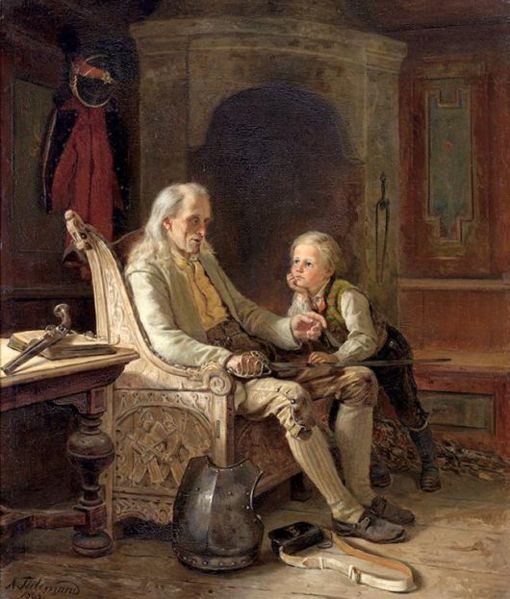
From 1837-1841 he continued his studies with the art academy in Düsseldorf, which at the time enjoyed widespread international recognition. Here he prepared the well known Hjemvendte fiskere ved den sjællandske kyst (1838). The painting Gustav Vasa taler til dalalmuen i Mora kirke (1841), was sold to a German museum, but was later returned to Christiania.
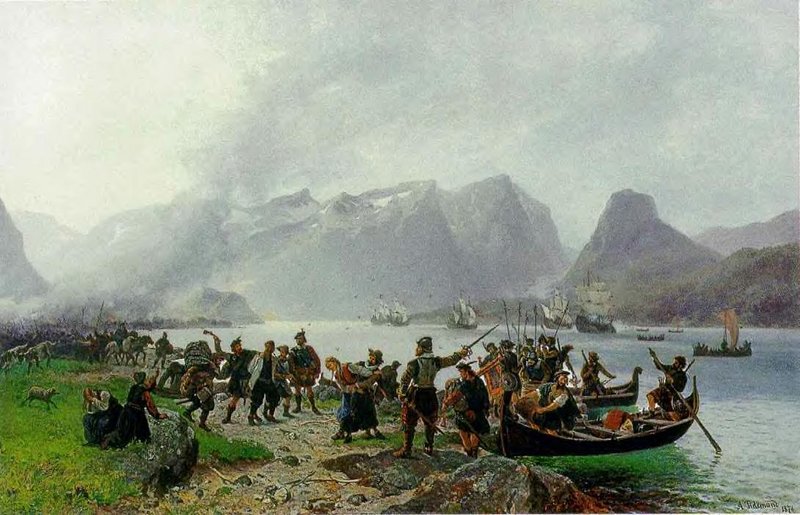
In the autumn of 1841 he studied in Italy together with his brother Emil. Of this period little remains except for the picture Napolitansk fisker (1842). During 1842-45 he traveled extensively in Norway (Østerdalen, Gudbrandsdalen, Sogn, Hardanger and Telemark). More of his works survive from this period, including: Eventyrfortellersken (1844), Søndagskveld i en hardangersk røkstue (1843), and Gudstjeneste i en norsk landsens kirke (1845).
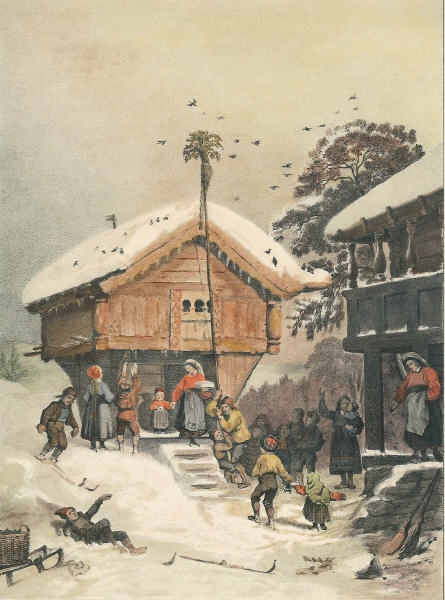
He married in 1845 with his childhood sweetheart, Claudine Marie Bergitte Jæger (1817-1887). The couple settled in Düsseldorf in 1845. Here he painted the first of several versions of Haugianerne (1848).
